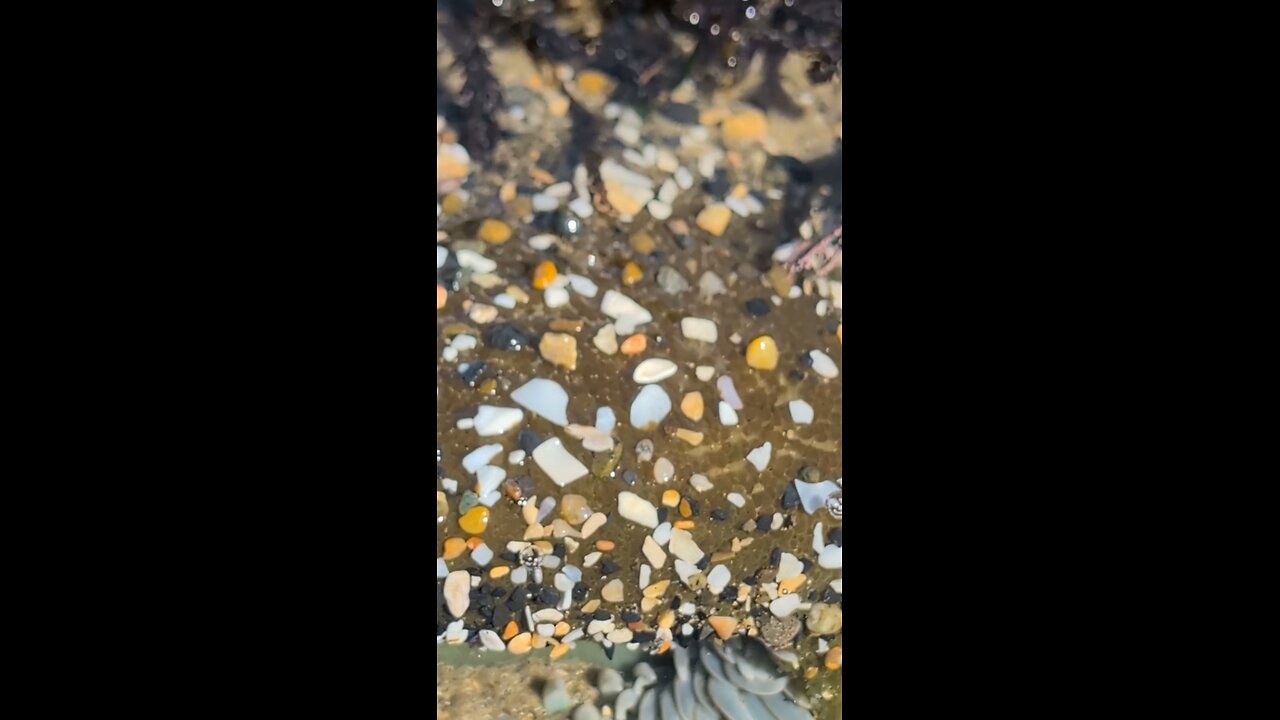Premium Only Content

Sea Life Near the Bowl!
This image shows a close-up of a sea anemone, specifically an aggregating anemone (Anthopleura elegantissima), commonly found in the intertidal zones of the Pacific coast of North America. The anemone is in its contracted state, with its tentacles partially retracted, which is typical when it's exposed to air during low tide.
The distinctive feature here is the "shell gravel" or small pebbles, shell fragments, and sand particles that are attached to its body. Aggregating anemones use their sticky outer surface to collect these materials, which serve as a protective layer against desiccation (drying out) and UV radiation when the tide is out. The tentacles, visible at the bottom of the image, are used for feeding and capturing prey when the anemone is submerged in water.
These anemones often live in colonies and can reproduce asexually by splitting, which is why you might see many of them clustered together in tide pools or rocky shores. They also have a symbiotic relationship with photosynthetic algae (zooxanthellae) living in their tissues, which provide them with nutrients through photosynthesis.
-
 2:00:50
2:00:50
The Quartering
2 hours agoPam Bondi GRILLED, CIA Coverup, DEI Backfire & Taylor Swift Cancelled!
103K37 -
 1:25:13
1:25:13
Awaken With JP
3 hours agoKirk Conspiracies Heat Up, Netflix Castrates Itself, and More!
45.9K34 -
![[Ep 764] Jack Smith For Prison | Pritzker Says Ice Lies, Sides w/ Criminals | Guest Sam Anthony](https://1a-1791.com/video/fwe2/d2/s8/1/6/2/N/o/62Noz.0kob-small-Ep-764-Jack-Smith-For-Priso.jpg) LIVE
LIVE
The Nunn Report - w/ Dan Nunn
1 hour ago[Ep 764] Jack Smith For Prison | Pritzker Says Ice Lies, Sides w/ Criminals | Guest Sam Anthony
188 watching -
 1:48:42
1:48:42
Steven Crowder
7 hours agoDid You Vote for This: Why The Podcast Bros are Turning on Trump
457K526 -
 LIVE
LIVE
The HotSeat
1 hour agoBondi On The Hill + Equitable Grading? We Are Failing Our KIDS!
879 watching -
 1:09:25
1:09:25
Winston Marshall
2 hours agoExposing Britain's Digital ID Plan and What’s Coming Next…
28.2K14 -
 3:29:52
3:29:52
Barry Cunningham
6 hours agoPRESIDENT TRUMP MEETS WITH CANADIAN PRIME MINISTER MARK CARNEY
44.6K14 -
 LIVE
LIVE
Owen Shroyer
1 hour agoOwen Report - 10-07-2025 - Fake Government Shutdown Gets Real
1,656 watching -
 1:08:12
1:08:12
SportsPicks
4 hours agoCrick's Corner: Episode 95
16.7K1 -
 4:23
4:23
Michael Heaver
4 hours agoShellshocked France Is Quickly COLLAPSING
18.1K7
